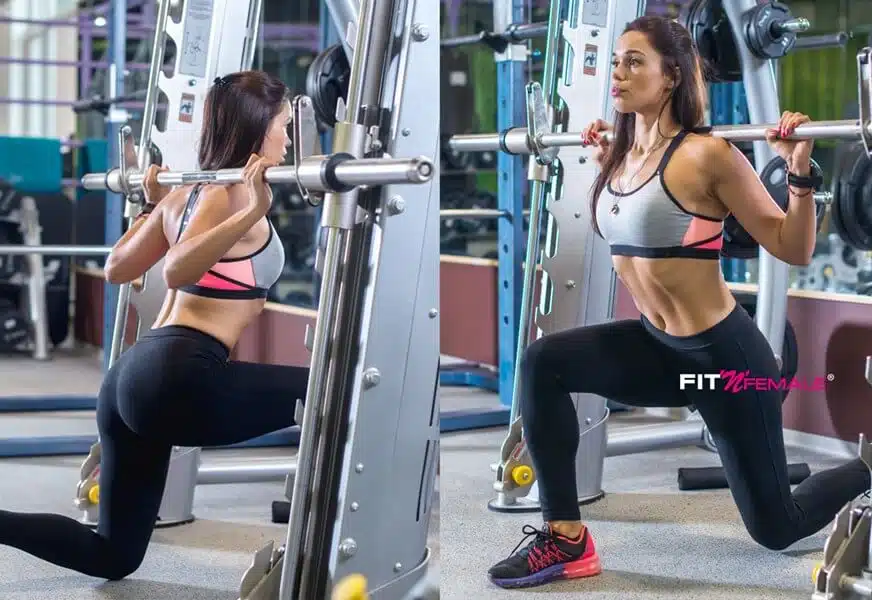If women today want to achieve an aesthetic body with the help of fitness and strength training, then they should specifically train the leg and pomus muscles in particular. These body regions look particularly attractive when they are well trained. It is not for nothing that many workouts are offered for the abdomen, legs and buttocks. An ideal exercise for these muscle groups are Lunges or lungeswhich train the gluteus maximus and quadriceps particularly intensively. In the following we want to show the correct movement sequence of Lunges describe in more detail and draw attention to errors that can result from incorrect training.
Lunges - the all-round exercise
There is rarely an exercise that can train as many large muscle groups as a lunge. Lunges particularly intensively train the quadriceps, gluteus maximus and also the tensor fascia lata. In layman's terms, this formulation means that mainly the thigh and gluteal muscles are trained with the lunges. However, it is also important to learn stability in the trunk muscles, which is created by tightening the individual muscles. Stable trunk muscles provide safety and stability in a wide variety of movements. Lunges are suitable for training with or without equipment and can be easily performed in any location. However, in order to learn the exercise correctly, you should first train without weights. After a certain time, when you have mastered the movement and technique of lunges, you can expand the exercise with dumbbells or a barbell (without weights).Lunges can be performed with a short or long step either forward or backward. If the exercise is performed with a short step, the load is transferred more to the thigh, while with a long step the load is transferred more to the gluteal muscle.
Execution
You start the exercise standing upright in a shoulder-width stance, with your arms hanging loosely down and your eyes straight ahead. You now begin the exercise by first stepping forward with your left foot. As mentioned before, the step can be either long or short. Make sure that your hips remain straight and that you do not lose your balance. Now try to lower the hips and stop the right knee just before the floor. From this position, pull the left leg back and return to the starting position. You can change the sequence of steps in such a way that instead of the left leg you put the right leg forward, so that you take a total of one step forward during the exercise.
What you need to keep in mind when doing lunges
- When doing lunges, it is important that you can keep your balance during the exercise and that you do not bend sideways with your upper body. Therefore, as a beginner, always start lunges with your hands on your hips.
- This starting position improves balance and stability during the movement process.
- If you perform the exercise with two dumbbells, you should make sure that the weights are not too heavy. The heavier the weight, the greater the load on the knees.
- Make sure that you never touch the ground with your knees. Otherwise, you can unnecessarily injure your knee. In addition, a knee that is too low can affect the balance necessary for proper exercise progression.
- Always stay in the deep position for two to three seconds before returning to the starting position.
- Make sure that during the exercise the upper body does not move. During lunges only the legs are moved, the upper body always remains in a stable and rigid position.
Inhale as you step into the squat position and exhale as you return to the starting position.
Conclusion
There are few exercises that can be trained as varied and intense as the Lunges. This effective exercise trains the thighs and buttocks and provides perfect stability in the torso zone. Lunges is the ideal workout when traveling, as this exercise can be practiced anywhere with or without equipment.








